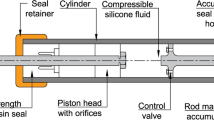Abstract
The energy dissipation devices, with their capabilities of seismic demand reduction, are effective and widely used innovative structural solutions for the seismic protection of buildings. Viscous Wall Dampers (VWD) are also encouraging for new design opportunities of high-rise buildings such as reinforced concrete (RC) special moment resisting frames (SMRF). Moreover, retrofitting the existing buildings with VWDs is also possible without any detrimental effects on the architectural design. This study investigates the effectiveness of VWDs on the dynamic performance of high-rise buildings having torsional irregularity. A 22-story irregular RC SMRF building is designed and subjected to a seismic redesign process equipping the building only with VWDs, without changing the dimensions of any other structural elements. The VWDs are placed to suppress the torsional irregularity of the basic design for seismic mitigation objectives. The seismic performances of the buildings with various configurations of VWDs are evaluated. The location of the prototype building is selected to be in a highly seismic active area in Turkey. A readily available and validated computational model for VWD is implemented. The results of the nonlinear response history analysis (NRHA) have shown that the wall dampers can effectively reduce the torsional irregularity, as well as the maximum interstory drift ratios to less than 2% which is set as the target performance objective for the design-based earthquake level. By installing VWDs, it is demonstrated that the torsional irregularity is suppressed while the flexible SMRF design for a 22-story building still satisfies the target performance objectives.














Similar content being viewed by others
References
ACI (American Concrete Institute) (2014) ACI 318–14. Building Code Requirements for Structural Concrete. American Concrete Institute, Farmington Hills, Michigan
ASCE (2005) ASCE 7 – 05 – Minimum design loads for buildings and other structures. American Society of Civil Engineers
ASCE (2017) ASCE 7–16 – Minimum design loads for buildings and other structures. American Society of Civil Engineers
Arima F, Miyazaki M, Tanaka H, Yamazaki Y (1988) A study on buildings with large damping using viscous damping walls. Proc. of the 9th World Conf. on Earthquake Eng. (9WCEE), Vol. 5, Tokyo-Kyoto, Japan, pp. 821–826
Castaldo P, De Iuliis M (2014) Optimal integrated seismic design of structural and viscoelastic bracing-damper systems. Earthquake Eng Struct Dynam 43(12):1809–1827
Castaldo P, Gino D, Bertagnoli G, Mancini G (2018) Partial safety factor for resistance model uncertainties in 2D non-linear finite element analysis of reinforced concrete structures. Eng Struct 176:746–762
Castaldo P, Gino D, Mancini G (2019) Safety formats for non-linear finite element analysis of reinforced concrete structures: discussion, comparison and proposals. Eng Struct 193:136–153
Castaldo P, Gino D, Bertagnoli G, Mancini G (2020) Resistance model uncertainty in non-linear finite element analyses of cyclically loaded reinforced concrete systems. Eng Struct 211:110496
Christopoulos C, Filiatrault A (2006) Principles of Passive Supplemental Damping and Seismic Isolation. IUSS Press, Italy
Çerçevik AE, Avşar Ö, Hasançebi O (2020) Optimum design of seismic isolation systems using metaheuristic search methods. Soil Dyn Earthq Eng 131:0267–7261. https://doi.org/10.1016/j.soildyn.2019.106012
Dilsiz A, Mohammed MS, Özuygur AR, Moustafa MA (2018) Evaluation of wall damper effectiveness on the seismic performance of buildings. Proc. of the 11th U.S. National Conf. on Earthquake Eng. (11NCEE), June 25–29, 2018 Los Angeles, CA, USA
Dilsiz A, Mohammed MS, Moustafa MA, Özuygur AR (2020) Seismic Design and Performance of Reinforced Concrete Special Moment Resisting Frames with Wall Dampers. J Earthquake Eng. doi: https://doi.org/10.1080/13632469.2019.1692741
DIS (2009) Viscous Wall Dampers: Superior Earthquake Protection for Flexible Buildings. Dynamic Isolation Systems Inc. (DIS), McCarran, NV. (last access on July 2020 at: http://www.dis-inc.com/pdf_files/DIS_VWD.pdf)
DIS (2017) Viscous Wall Dampers: Guidelines for modeling. Dynamic Isolation Systems Inc. (DIS), McCarran, NV, (last access on July 2020 at: http://www.dis-inc.com/pdf_files/DIS%20Viscous%20Wall%20Dampers%20-%20Guidelines%20for%20Modeling.pdf
ETABS v16 (2016) Structural Software for Analysis and Design. Computers and Structures, Inc. (CSI), CA, USA
Greco R, Marano GC (2015) Identification of parameters of Maxwell and Kelvin–Voigt generalized models for fluid viscous dampers. J Vib Control 21(2):260–274
Kihara S, Shibuya T, Okuzono T, Takahashi O, Miyazaki M (1998) High-rise government office building with viscous damping walls. Proc. of Structural Engineers World Congress, July 1998, San Francisco, CA, USA
Love R, Newell J, Sinclaire M, Chen Y (2012) Performance-based design of an essential hospital with supplemental viscous damping in a high seismic zone. Proc. 15 World Conf. on Earthquake Engineering. Lisbon, Portugal
Miyazaki M, Arima F, Kidata Y, Hristov I (1986) Earthquake response control design of buildings using viscous damping walls. Proc. of 1st East Asian Conf. on Structural Eng. and Construction, Bangkok, Thailand, pp. 1882–1891
Mohammed MS, Akl AE, Coria CB, Eriksen KB (2019) Enhancing seismic performance of buildings using viscous wall dampers. Proc. of Pacific Conf. on Earthquake Eng. (PCEE2019), April 4–6, 2019 SkyCity, Auckland, New Zealand
Newell J, Love J, Sinclair M, Chen YN, Kasalanati A (2011) Seismic Design of a 15 Story Hospital Using Viscous Wall Dampers. April 14–16, 2011, Proc. of Structures Congress, Las Vegas, NV, USA
PEER (2017) NGA-West2 Database of Pacific Earthquake Engineering Research Center. PEER, Berkeley, CA. http://ngawest2.berkeley.edu
TEC (2007) Specifications for structures to be built in disaster areas (Turkish Earthquake Code). Turkish Ministry of Environment and Urban Planning, Ankara, Turkey
TBSC (2018) Turkish Building Seismic Code. Disaster and Emergency Management Presidency. Republic of Turkey Prime Ministry, Ankara, Turkey
Wilson EL (2004) Static and Dynamic Analysis of Structures, 4th edn. Computers and Structures, Inc, Berkeley, CA
Author information
Authors and Affiliations
Corresponding author
Additional information
Publisher’s Note
Springer Nature remains neutral with regard to jurisdictional claims in published maps and institutional affiliations.
Electronic Supplementary Material
Below is the link to the electronic supplementary material.
Rights and permissions
About this article
Cite this article
Dilsiz, A., Özuygur, A.R. Suppression of the torsional irregularity of high-rise buildings using viscous wall dampers. Bull Earthquake Eng 20, 4237–4257 (2022). https://doi.org/10.1007/s10518-022-01371-6
Received:
Revised:
Accepted:
Published:
Issue Date:
DOI: https://doi.org/10.1007/s10518-022-01371-6



